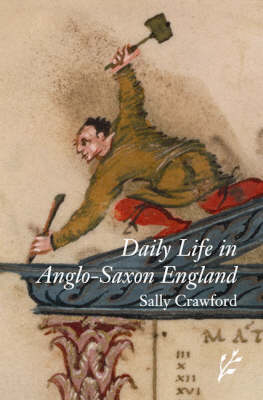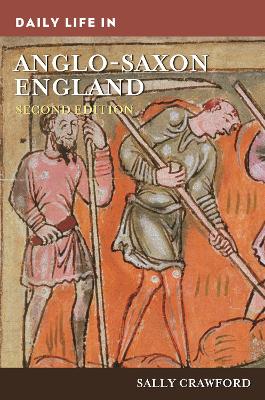Daily Life
2 total works
In addition to its unshakeable position on academic History curricula, Anglo-Saxon England remains popular with the general public. However, despite numerous specialist volumes on the political and economic history of the period, there are no books currently on the market which offer an overview of Anglo-Saxon daily life. This book fills that gap, covering a great range of common life experiences of individuals in England, AD c. 450-c.1066, including domestic and family life, work and leisure, education, clothing and housing, food, religion, magic and superstition, health and sickness, warfare, crime and punishment, ethnic and national identity, the creation of kingship, slavery, urban life, and political life for men, women and children.
Archaeological evidence gives a dramatic picture of social organization in Anglo-Saxon towns, and sources such as wills provide insight into the way families were structured and organized. Evidence in the law codes and literature shows how Anglo-Saxons experienced childhood, youth, marriage, adulthood, parenthood and old age; how they were educated and engaged in trades, and what they did in their leisure time. Archaeological and documentary evidence, including pictorial representations in sculpture and manuscripts, give a vivid picture of Anglo-Saxon food and dress, and also of the military and governmental forces of Anglo-Saxon England. Religion was an important part of daily life, and so was crime, justice, punishment and slavery. Indeed, the struggle to survive meant that health and sickness were crucial everyday concerns. All these aspects of daily life are examined in Sally Crawford's book, creating a rich picture of ordinary, but complex, life in Anglo-Saxon England.
Daily Life in Anglo-Saxon England examines and recreates many of the details of ordinary lives in early medieval England between the 5th and 11th centuries, exploring what we know as well as the surprising gaps in our knowledge.
Daily Life in Anglo-Saxon England covers daily life in England from the 5th through the 11th centuries. These six centuries saw significant social, cultural, religious, and ethnic upheavals, including the introduction of Christianity, the creation of towns, the Viking invasions, the invention of "Englishness," and the Norman Conquest.
In the last 10 years, there have been significant new archaeological discoveries, major advances in scientific archaeology, and new ways of thinking about the past, meaning it is now possible to say much more about everyday life during this time period than ever before. Drawing on a combination of archaeological and textual evidence, including the latest scientific findings from DNA and stable isotope analysis, this book looks at the life course of the early medieval English from the cradle to the grave, as well as how daily lives changed over these centuries. Topics covered include maintenance activities, education, play, commerce, trade, manufacturing, fashion, travel, migration, warfare, health, and medicine.
- Takes an interdisciplinary approach, using archaeological and textual sources
- Supports the text with references to key sites, artifacts, and documents
- Focuses on everyday life
- Reflects the subject expertise of the author

